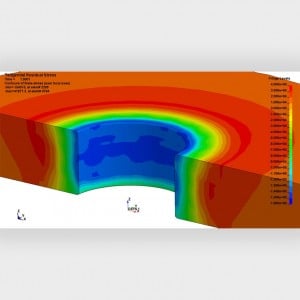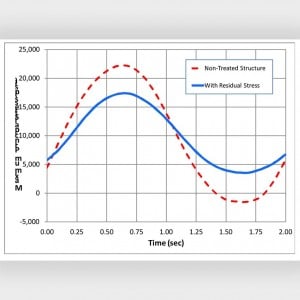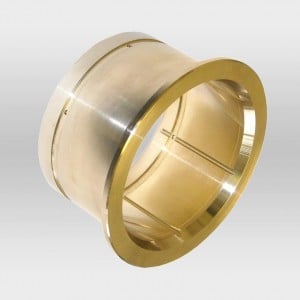StressWave can assist with enhancing the fatigue performance of advanced structures through analysis, test, and use of beneficial residual stress-inducing processes. Beneficial residual stresses are used to improve structural performance by typically increasing fatigue life and reducing component weight, using a variety of methods. Using our extensive experience with all of the most widely used methods, we are able to assess all of the possible solutions and pick the one that’s the most cost-effective for the application.
Some of the most widely used methods are:
StressWave® Cold Working (Patented)An upstream cold working process where residual stresses are imparted into the near net shape (forging, extrusion, plate, interim configuration, etc.) of the component BEFORE machining of the holes and other features. Part distortion is minimized as the distortion due to cold working is machined away while the beneficial stresses remain. This process works on components that do not have existing holes and can be used for thru and blind holes.
A list of published journal articles and technical papers reporting on the effectiveness of StressWave® cold working is available.
- Download: StressWave Cold Working Technical Papers (pdf)
Contact StressWave if you would like a copy of any of these documents.
Special design bushings, both flanged and straight, are expanded into precision starting holes using a tapered mandrel. The bushings are pre-coated with a dry-film lubricant on the inside diameter. Bushing are typically machined after installation to a specific inside diameter. The control of installation parameters leads to a very consistent interference fit as well as beneficial residual stresses.
A cold working processes where a precision starting hole is drilled into a final part/assembly then a tapered mandrel pre-fitted with a single-use stainless steel split sleeve is pulled through the hole imparting beneficial residual stresses. The holes are typically machined to the final diameter.
This process is similar to the split sleeve process, but uses a split mandrel which eliminates the requirement for the sleeve. A liquid lubricant, applied by the pulling unit, is required for the process. The holes are typically machined to the final diameter.
Rivetless nutplates are installed using mandrel cold working products (split sleeve, split mandrel, mandrel only). These systems replace conventional riveted nutplates and gang channels, and the common fatigue issues associated with the rivet holes needed to attach them.
The fatigue properties of all types of welds – spot, inertia, linear, etc. – can be enhanced by modifying stresses and strains in the heat affected zones.
There are a number of surface treatments available that induce compressive residual stresses in the surfaces of metallic materials. Shot peening, the most common, is a cold working process that uses steel shot (or other materials) that is applied with high impact force to impart residual compressive stresses in the surface. The depth of the residual compressive stresses is relatively shallow as compared to mandrel methods, but is effective for many applications where the problematic feature is not a hole or cut-out. There are other more advanced surface treatments that can be considered for unique problems.
We can help with creation of advanced, long-life structures.



